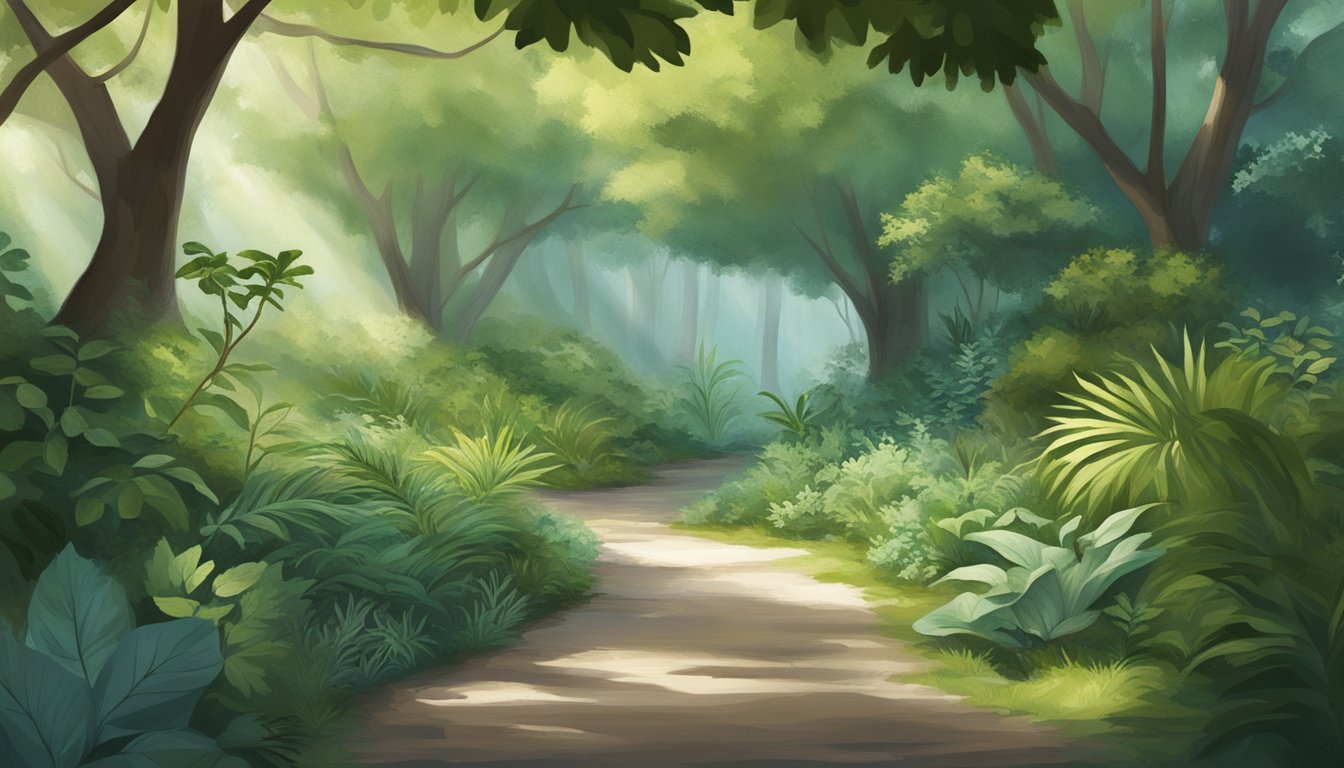TheHerbProf.com is a treasure trove of knowledge for those interested in natural healing and herbal remedies. The website is run by Paul Johnston MD. A naturopathic who has not only received extensive education in the field but also has personal experience in self-healing.
Shade plants herbs are a great addition to any garden, especially for those who have limited sunlight in their outdoor space. These plants can thrive in areas with partial to full shade, making them a perfect option for gardeners who want to grow herbs but don’t have a lot of direct sunlight.
Growing shade plants herbs can be a rewarding experience, as they can provide a variety of benefits. Some shade herbs are edible and can be used in cooking, while others have medicinal properties that can be used for various health issues. Additionally, shade herbs can add a beautiful touch to any garden with their unique colors, textures, and scents.
When it comes to gardening shade plants herbs, it’s important to keep in mind that not all herbs will thrive in the same conditions. Some herbs prefer more shade than others, while some can tolerate more sunlight. It’s important to do research on the specific herbs you want to grow and determine their ideal growing conditions. With the right care and attention, shade plants herbs can flourish and provide a beautiful and useful addition to any garden.
Understanding the Difference Between Shade and Sunlight for Plant Growth
As an herb enthusiast, I know that understanding the difference between shade and sunlight is crucial for growing healthy plants. Herbs, like all plants, need sunlight to grow, but the amount of sunlight required varies depending on the type of herb.
Full Sun vs. Partial Shade
Herbs that require full sun need at least six hours of direct sunlight per day. These herbs include basil, oregano, and thyme. On the other hand, herbs that prefer partial shade require between three and six hours of direct sunlight per day. These herbs include cilantro, chives, and parsley.
Shade Gardens and Low Light Gardens
If you have a shade garden or a low light garden, you can still grow herbs. Shade-tolerant herbs, such as mint, lemon balm, and sweet woodruff, can thrive in areas with little to no direct sunlight. These herbs prefer partial to full shade and can even grow in areas with dappled sunlight.
Sun Exposure and Sunlight Exposure
It’s essential to understand the difference between sun exposure and sunlight exposure. Sun exposure refers to the amount of time a plant is exposed to direct sunlight, while sunlight exposure refers to the intensity of the sunlight. Herbs that prefer full sun need both high sun exposure and high sunlight exposure. In contrast, herbs that prefer partial shade need moderate sun exposure and moderate sunlight exposure.
Understanding the difference between shade and sunlight is crucial for growing healthy herbs. By knowing the amount of sunlight required for each herb and the difference between sun exposure and sunlight exposure, you can create the perfect growing environment for your herbs.
Top 10 Herbs That Thrive in Shade
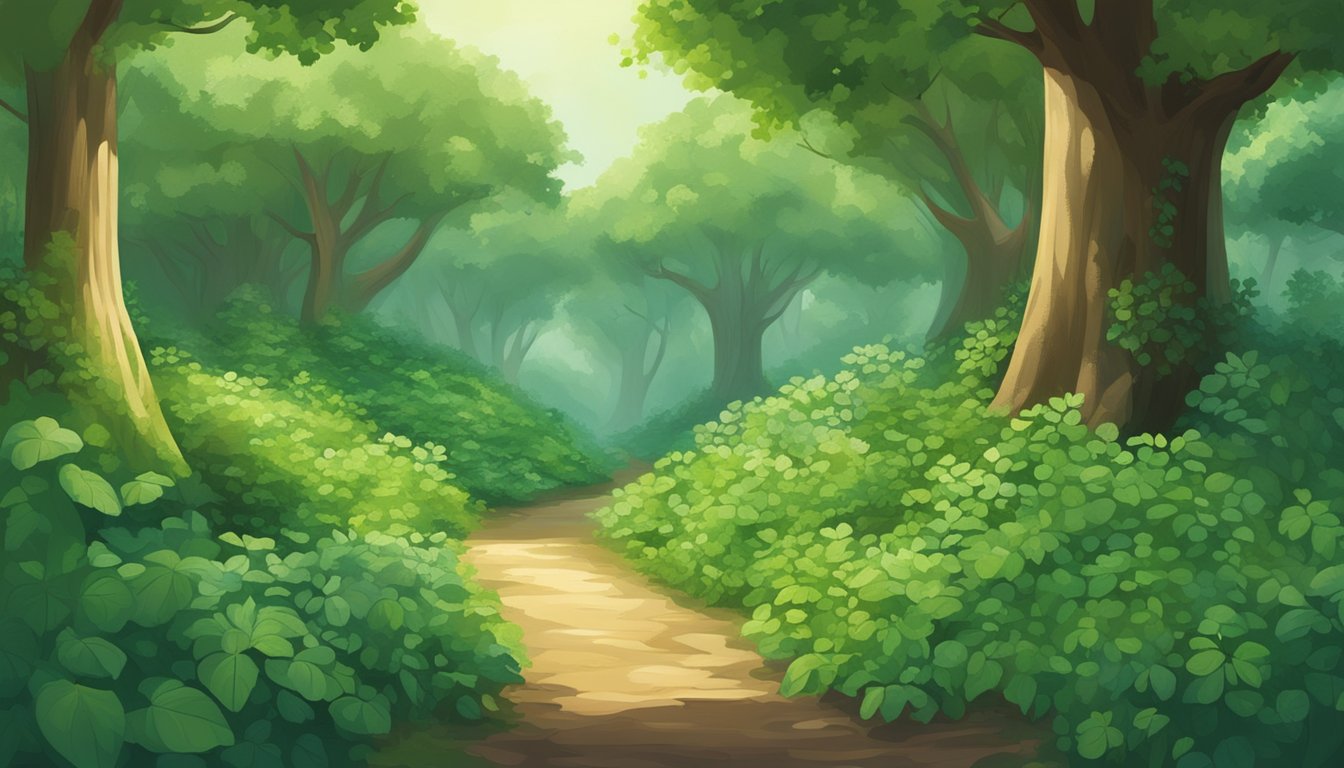
As an experienced gardener, I know the importance of choosing the right plants for the right location. When it comes to shade plants, herbs are a great option. Here are my top 10 herbs that thrive in shade:
Chervil
Chervil is a delicate herb that adds a subtle anise flavor to dishes. It prefers partial shade and moist soil. It has fine, fern-like leaves that can be harvested throughout the growing season. Chervil can also be grown as an ornamental plant and as a ground cover.
Lemon Balm
Lemon balm is a fragrant herb that is often used in teas and desserts. It prefers partial shade and moist soil. It has heart-shaped leaves that can be harvested throughout the growing season. Lemon balm is also a great companion plant for vegetables and attracts pollinators to the garden.
Mint
Mint is a versatile herb that can be used in both sweet and savory dishes. It prefers partial shade and moist soil. It has a spreading growth habit and can be harvested throughout the growing season. Mint is also a great ground cover and can be grown in containers.
Chives
Chives are a popular herb that add a mild onion flavor to dishes. They prefer partial shade and moist soil. They have thin, grass-like leaves that can be harvested throughout the growing season. Chives also have attractive purple flowers that are edible and can be used as a garnish.
Tarragon
Tarragon is a classic French herb that adds a unique flavor to dishes. It prefers partial shade and well-drained soil. It has long, narrow leaves that can be harvested throughout the growing season. Tarragon is also a great companion plant for tomatoes and other vegetables.
Parsley
Parsley is a versatile herb that is often used as a garnish. It prefers partial shade and moist soil. It has curly or flat leaves that can be harvested throughout the growing season. Parsley is also a great companion plant for roses and attracts beneficial insects to the garden.
Bay
Bay is an evergreen herb that is often used in soups and stews. It prefers partial shade and well-drained soil. It has glossy, dark green leaves that can be harvested throughout the growing season. Bay is also a great ornamental plant and can be grown in containers.
Dill
Dill is a popular herb that is often used in pickling. It prefers partial shade and moist soil. It has feathery leaves that can be harvested throughout the growing season. Dill is also a great companion plant for cucumbers and attracts beneficial insects to the garden.
Cilantro/Coriander
Cilantro and coriander come from the same plant and have distinct flavors. Cilantro is often used in Mexican and Asian cuisine, while coriander is used in Indian and Middle Eastern cuisine. They prefer partial shade and moist soil. They have delicate leaves that can be harvested throughout the growing season. Cilantro and coriander are also great companion plants for beans and attract beneficial insects to the garden.
Lemon Verbena
Lemon verbena is a fragrant herb that is often used in teas and desserts. It prefers partial shade and well-drained soil. It has long, narrow leaves that can be harvested throughout the growing season. Lemon verbena is also a great ornamental plant and can be grown in containers.
As a gardener, I know that growing shade plants can be challenging. However, with the right herbs and growing conditions, you can have a thriving herb garden in the shade.
Tips for Growing Shade-Loving Herbs
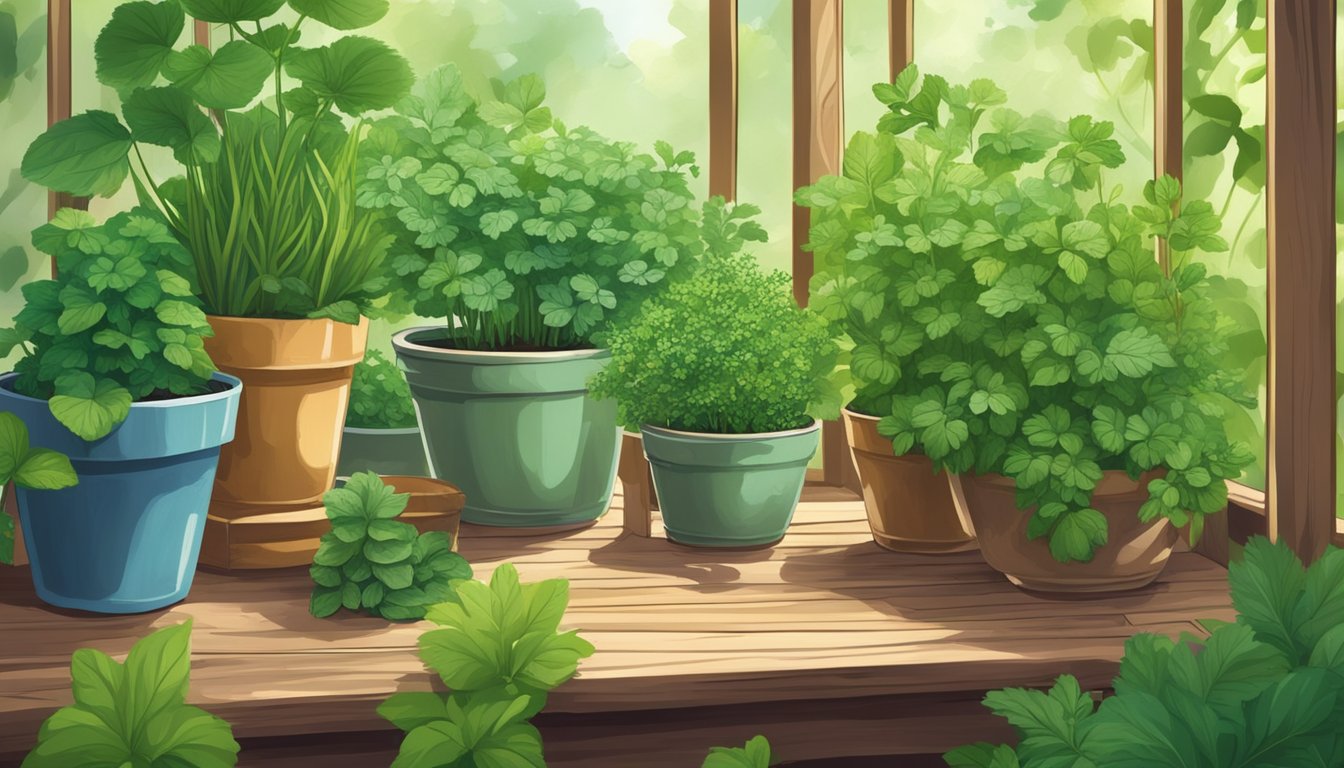
As someone who has grown herbs in the shade, I’ve learned a few tips and tricks that can make all the difference in the success of your plants. Here are some guidelines to follow when growing shade-loving herbs:
Choosing the Right Location
When it comes to growing herbs in the shade, location is key. Most herbs need at least six hours of sun per day to thrive, but there are a few that can tolerate shade. Some of the best herbs to grow in the shade include mint, parsley, chives, cilantro, and lemon balm. When choosing a location for your shade-loving herbs, look for an area that gets dappled sunlight or a few hours of morning sun. Avoid areas that are completely shaded all day long.
Proper Watering and Drainage
Watering your herbs correctly is crucial to their success. Most herbs prefer well-draining soil that is moist but not waterlogged. When watering your shade-loving herbs, be sure to water deeply and infrequently. This will encourage the roots to grow deeper into the soil and make the plants more drought-resistant. If you’re growing your herbs in containers, be sure to choose pots with drainage holes and use a well-draining potting mix.
Fertilizing
Herbs grown in the shade may need a little extra help when it comes to fertilizing. Since they’re not getting as much sunlight, they may not be able to produce as much energy through photosynthesis. To give your herbs a boost, you can fertilize them with a balanced, all-purpose fertilizer once a month during the growing season. Be sure to follow the instructions on the fertilizer package carefully, as over-fertilizing can harm your plants.
Harvesting and Using Herbs
One of the best things about growing herbs is being able to use them in your cooking. When harvesting your shade-loving herbs, be sure to only take a few leaves or sprigs at a time. This will encourage the plants to continue producing new growth. Herbs can be used in a variety of dishes, including salads, soups, stews, and desserts. They’re also great for flavoring meat dishes and sauces.
Growing herbs in the shade can be a rewarding experience for any gardener. By following these tips, you can ensure that your shade-loving herbs thrive and provide you with delicious, edible leaves for years to come.
Before You Go – Shade Plants Herbs
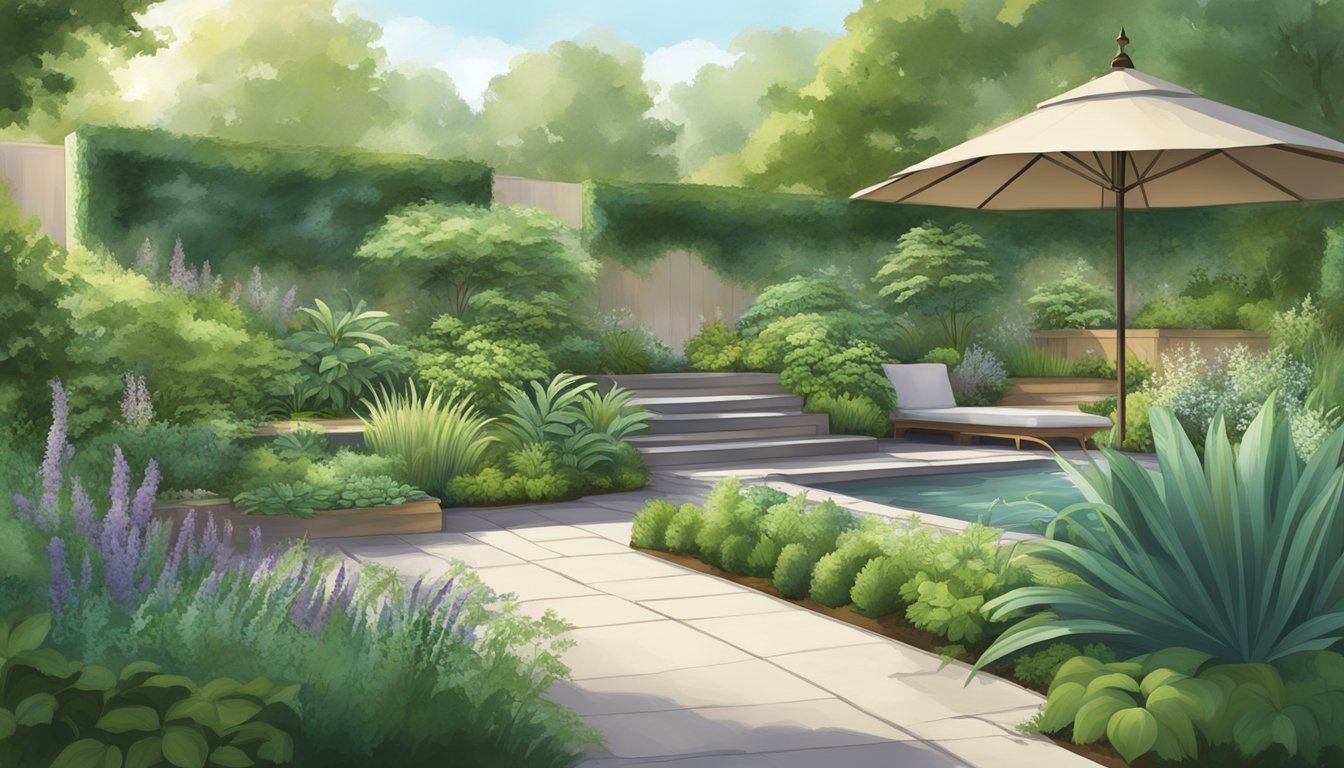
Growing herbs in the shade can be a great way to add variety to your garden while also taking advantage of underutilized spaces. With the right knowledge and techniques, you can confidently grow a wide range of herbs that thrive in low light conditions.
One important factor to keep in mind when growing shade-loving herbs is the amount of sunlight they receive. While most herbs require at least 5 hours of direct sunlight per day to grow properly, there are several varieties that can thrive in partial or full shade. These include popular culinary herbs like parsley, mint, and chives, as well as medicinal herbs like angelica and nettle.
To ensure success when growing herbs in the shade, it is important to choose the right location and soil conditions. Shaded areas should still have good airflow and rich soil, and you may need to prune and harvest from bushy herbs to let more light in. Additionally, selecting shade-tolerant herbs and adapting your irrigation schedules can help ensure optimal growth and yield.
Overall, growing herbs in the shade requires a bit of knowledge and experimentation, but with the right approach, you can enjoy a bountiful harvest of flavorful and aromatic herbs all season long. So why not give it a try and see what you can grow in the shade?
The Harmony of Shade Plants and Herbs: A Connection to Our Home Page
Let’s explore the world of shade plants and herbs and how it links to our home page at theherbprof.com. They’re like two pieces of a puzzle, each enhancing the other’s picture!
Our home page is a treasure chest of herbal wisdom. It’s packed with information about various herbs and their medicinal properties. When it comes to understanding the unique characteristics of shade plants and herbs, this knowledge is your secret weapon!
Now, let’s tackle shade plants and herbs. It’s a fascinating topic, isn’t it? But don’t worry! We’ve got some herbal insights on our side. Our home page provides resources and guides that can help you understand which herbs thrive in the shade, such as Mint and Chervil.
So, how do these two connect? Well, our home page provides the knowledge base you need to understand how these herbs grow and thrive. And the section on shade plants gives you a practical application for that knowledge. It’s a perfect harmony!
Remember, knowledge is power. And our home page is all about empowering you to use herbs safely and effectively. It’s like having a cheerful Herbalist Blogger (that’s me!) guiding you through your herbal journey.
References – Shade Plants Herbs
Little Herb Encyclopedia, by Jack Ritchason; N.D., Woodland Publishing Incorporated, 1995
The Ultimate Healing System, Course Manual, Copyright 1985, Don Lepore
Planetary Herbology, Michael Tierra, C.A., N.D., Lotus Press, 1988
Handbook of Medicinal Herbs, by James A. Duke, Pub. CRP Second Edition 2007
The Complete Medicinal Herbal, by Penelope Ody, Published by Dorling Kindersley
Check the Following Articles!
Herbalist Healing: 6 Remedies You Need to Try Now
Herbal Remedies for Hayfever: Stop Your Allergies
Growing Herbs in Water: A Beginner’s Mega Guide
Frequently Asked Questions – Shade Plants Herbs
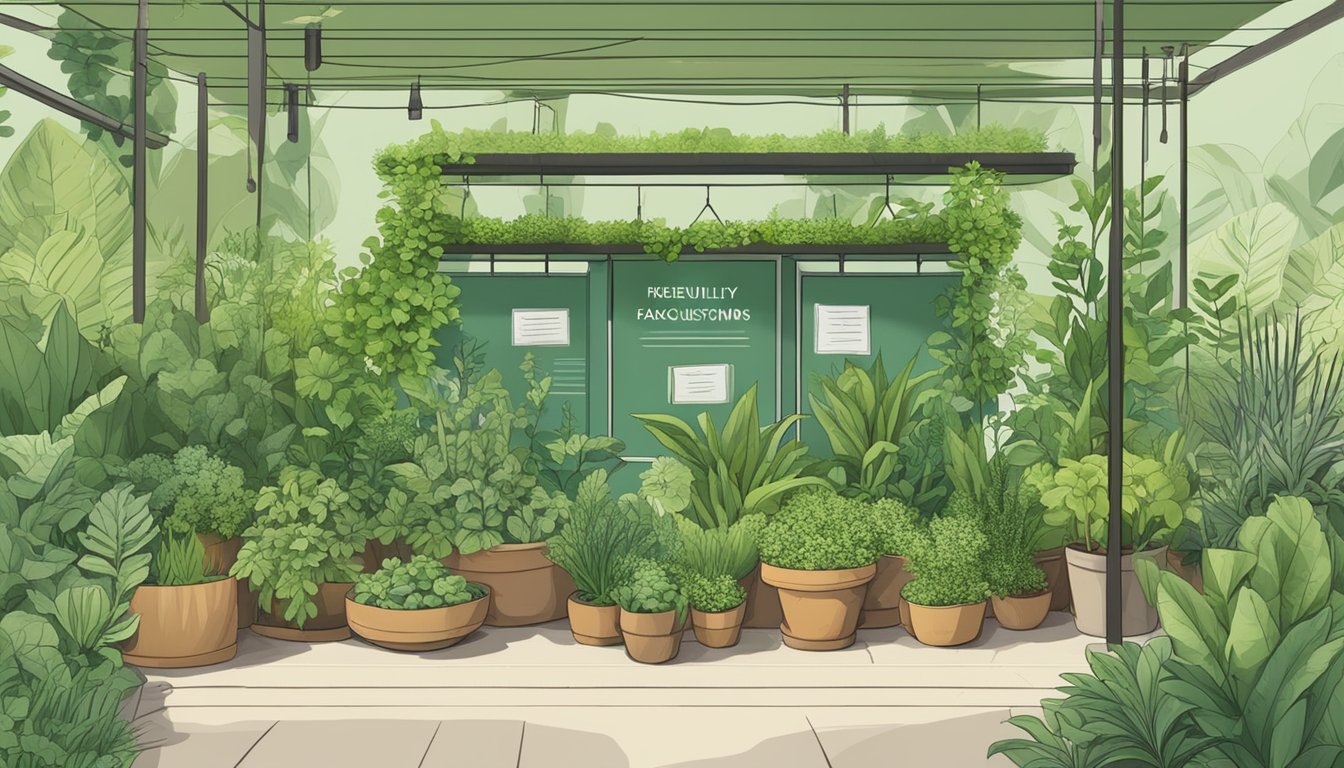
What are some common herbs that thrive in low-light conditions?
Some common herbs that can thrive in low-light conditions include parsley, cilantro, chives, mint, thyme, and oregano. These herbs are perfect for gardeners who have limited sunlight in their garden or are looking to grow herbs indoors.
Which vegetables can be successfully grown alongside herbs in shaded areas?
There are several vegetables that can be successfully grown alongside herbs in shaded areas. Some examples include lettuce, spinach, kale, and other leafy greens. These vegetables can benefit from the shade provided by the herbs and can also help to create a visually appealing garden.
Are there any medicinal herbs that can be cultivated in areas without direct sunlight?
Yes, there are several medicinal herbs that can be cultivated in areas without direct sunlight. Some examples include ginseng, goldenseal, and black cohosh. These herbs are known for their healing properties and can be grown in shaded areas with the right care and attention.
How can I grow herbs indoors with limited natural light?
Growing herbs indoors with limited natural light can be challenging, but it is possible. One way to do this is by using artificial lighting, such as grow lights or fluorescent bulbs. Another option is to place the herbs near a window that receives indirect sunlight. It’s also important to choose herbs that are well-suited for low-light conditions.
Can culinary herbs like basil and mint be grown in shaded gardens?
Yes, culinary herbs like basil and mint can be grown in shaded gardens. However, it’s important to note that these herbs may not grow as quickly or produce as much flavor in shaded areas. To help these herbs thrive in low-light conditions, it’s important to provide them with well-draining soil, adequate moisture, and occasional fertilization.
What are the best practices for nurturing shade-loving herbs to ensure healthy growth?
To ensure healthy growth of shade-loving herbs, it’s important to provide them with the right growing conditions. This includes well-draining soil, adequate moisture, and occasional fertilization. It’s also important to choose herbs that are well-suited for low-light conditions and to monitor them regularly for pests and diseases.
